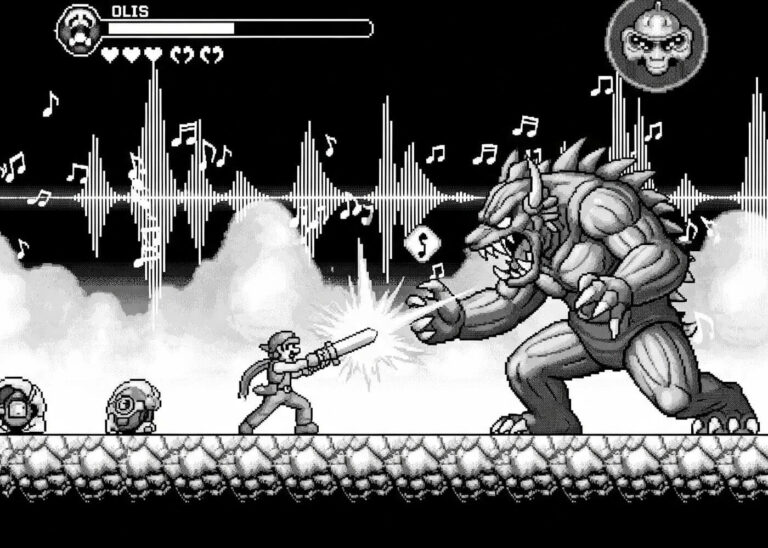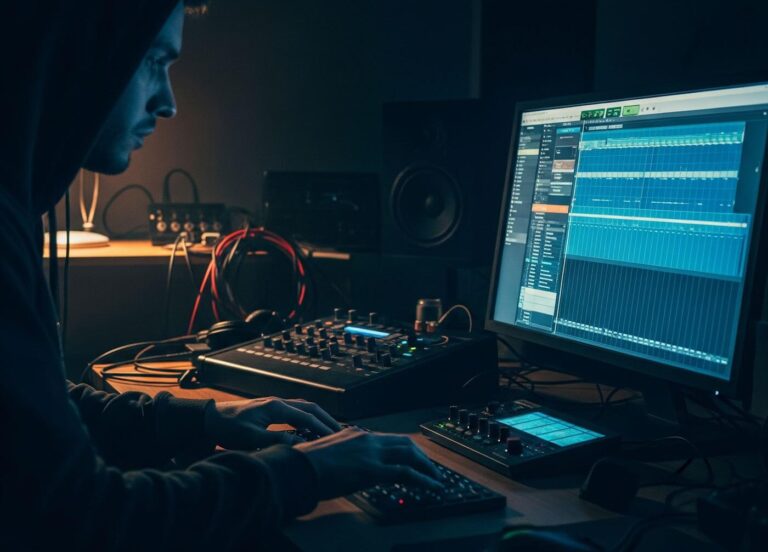How Video Game Music Shapes Player Emotions
Introduction to Video Game Music
The evolution of video game music is a fascinating journey that reflects the advancements in technology and artistry within the gaming industry. Initially, video game music was characterized by simple chiptune melodies, which were crafted to fit within the limitations of early gaming hardware. These catchy, repetitive tunes served as the backdrop to gameplay, enhancing the overall experience, albeit in a rudimentary manner.
As technology progressed, so did the complexity of video game soundtracks. The introduction of CD-ROM technology allowed developers to incorporate higher-quality audio, leading to the creation of intricate compositions that included a variety of instruments and styles. This shift paved the way for orchestral scores that we now associate with blockbuster titles. Renowned composers like Nobuo Uematsu, Hans Zimmer, and others have revolutionized the way music interacts with gameplay, making it an integral component in storytelling and player engagement.
The incorporation of music in video games goes beyond mere background sound; it significantly enhances the emotional landscape of the gaming experience. Soundtracks now have the ability to evoke a range of emotions, from excitement to dread, during key moments of gameplay. This emotional connection is vital, as it allows players to immerse themselves more deeply into the game world. Through perfectly timed musical cues and thematic melodies, players can feel tension build during a climactic battle or a sense of calm while exploring a vast open world.
Ultimately, video game music serves as an essential layer that complements visual storytelling and interactive elements. The progression from simplistic tunes to sophisticated aural experiences reflects not just technological advances but also an understanding of player psychology. As we delve deeper into the impact of music on player emotions, it becomes clear that soundtracks play a crucial role in shaping how we experience video games.
The Psychology of Music and Emotions
Music plays a formidable role in shaping human emotions, an idea deeply rooted in psychological research. The connection between music and emotional responses can be attributed to various musical elements such as tempo, harmony, and instrumentation. Each of these elements can evoke distinct feelings, further influencing the overall experience of the listener. Understanding this relationship is crucial, especially within the context of video game soundtracks, which aim to enhance the player’s emotional journey.
Tempo, or the speed of the music, can significantly influence how a listener feels. Fast tempos typically induce excitement and energy, while slower tempos can evoke feelings of calmness or sadness. In video games, the tempo of the music often correlates with the pace of the gameplay. For instance, action sequences are usually paired with rapid rhythms to heighten tension and urgency, compelling players to feel a heightened sense of alertness and engagement.
Harmony, which refers to the combination of different musical notes played simultaneously, also plays a pivotal role in emotional interpretation. Dissonance in music tends to provoke feelings of tension or unease, while consonance often brings about a sense of resolution and comfort. Video game composers strategically utilize these harmonic principles to create atmospheres that align with the narrative and gameplay mechanics, drawing players deeper into the game world.
Instrumentation—the choice of musical instruments—adds another layer of emotional depth. Different instruments resonate with listeners in varied ways; for example, string instruments might evoke a sense of nostalgia or warmth, while brass may inspire feelings of triumph or grandeur. This diverse palette allows game developers to tailor their soundtracks, enhancing the player’s emotional experience in relation to the game’s storyline and environment.
Building Atmosphere and Immersion
Music plays a pivotal role in establishing the atmosphere and enhancing the immersive experience within video games. It is through meticulously crafted soundscapes that composers breathe life into virtual environments, effectively transporting players to different realms and times. By employing various techniques such as thematic motifs, dynamic scoring, and environmental cues, composers create auditory experiences that resonate deeply with players, thereby intensifying their emotional engagement.
One fundamental technique utilized by composers is the incorporation of thematic motifs, which serve as auditory identifiers for characters, locations, or pivotal moments in the narrative. These motifs resonate with players, evoking emotions that align with the storyline. For instance, a heroic theme may accompany a character’s triumphant moment, while a melancholic tune might underscore a tragic event. Such contrasts not only enrich the storytelling but also allow players to connect with the game on a more personal level, fostering empathy and investment in the game’s outcome.
Dynamic scoring further enhances the gaming experience by adapting the music in real time, based on a player’s actions and in-game situations. This responsiveness allows for a fluid transition of moods, where the music can shift from tense crescendos during a high-stakes encounter to soothing melodies in moments of exploration or reflection. Such adaptability ensures that players remain engaged and emotionally charged as they traverse the game world.
Moreover, ambient sounds and environmental cues are instrumental in crafting a game’s atmosphere. These elements, often woven discreetly into the background, establish a sense of place and time, elevating the overall immersive quality. For example, the calming sounds of rustling leaves in a tranquil forest setting create a stark contrast to the ominous, echoing depths of a dungeon. By blending music with these auditory cues, composers enhance the emotional landscape, allowing players to feel as if they are genuinely part of the world they inhabit.
Music as a Narrative Tool
In the realm of video games, music operates not merely as an auditory backdrop, but as a critical narrative tool that enhances the overall gaming experience. Through the implementation of themes and motifs, composers can effectively signify character emotions and plot developments, thus engaging players on a deeper, more emotional level. This strategic use of music ensures that players remain invested in the unfolding narrative, allowing for a more immersive experience.
One of the most compelling aspects of video game music is its ability to convey intricate character arcs without the need for explicit dialogue. For instance, a character’s transformation may be underscored by a subtle shift in the musical score, utilizing variations of the character’s theme to reflect internal changes. This tactic not only enriches the storyline but also fosters a stronger emotional connection between the player and the character, as the accompanying music evokes empathy and understanding. The impact of such musical cues is profound, facilitating a connection that can often transcend words.
Moreover, the use of motifs can serve to highlight pivotal moments within the game. When a familiar melody reappears during a significant event, players are prompted to recall earlier instances, deepening their emotional investment in the story. This technique not only functions as a reminder of past experiences but also enhances the sense of continuity within the narrative. By intertwining music with the plot, developers create a rich tapestry that allows players to feel the weight of their choices and the consequences that follow.
In essence, music in video games transcends mere entertainment; it is a powerful narrative force that shapes and guides player emotions. By crafting memorable themes and carefully integrating them into gameplay, developers not only narrate a story but also invite players to forge meaningful connections with both the narrative and its characters.
Adaptive Music in Gaming
Adaptive music, also referred to as dynamic music, is an innovative approach utilized within the gaming industry to enhance the player’s emotional experience. This concept incorporates a musical score that responds in real-time to the player’s in-game actions or significant events occurring in the virtual environment. In doing so, adaptive music has become an integral component in creating immersive gaming experiences, where the emotional landscape is influenced by both gameplay mechanics and sound design.
One of the primary ways adaptive music shapes player emotions is by providing immediate auditory feedback. For instance, as players engage in combat or overcome challenges, the music might shift in intensity or complexity, reflecting the escalating tension of the situation. This immediate reaction aligns with the player’s actions, creating a sense of urgency and excitement that deepens engagement. Conversely, when a player completes a challenging quest, the music may transition to a more uplifting or victorious tone, evoking feelings of achievement and satisfaction.
Moreover, adaptive music contributes to the overall game atmosphere, assisting in the narrative delivery. For example, in exploration scenarios, a serene musical motif might enhance the sense of wonder and curiosity, while in suspenseful moments, dissonant and abrupt musical changes can heighten anxiety and anticipation. By effectively marrying sound with gameplay, developers can create nuanced emotional journeys that resonate deeply with players.
In this context, the composer’s role becomes increasingly vital, necessitating a deep understanding of both music theory and interactive design. As technology continues to advance, the evolution of adaptive music promises even more sophisticated and emotive experiences for players, solidifying its essential role in the realm of video game development.
Case Studies: Iconic Video Game Soundtracks
Video game soundtracks play a crucial role in shaping player emotions, and several iconic scores have become benchmarks in the industry. One noteworthy example is the soundtrack of The Legend of Zelda, composed by Koji Kondo. The series features memorable themes that evoke adventure and nostalgia, enhancing the player’s journey through its fantastical world. The use of memorable motifs, such as the main theme, conjures feelings of heroism and exploration, making players feel deeply connected to Link’s quest.
Another exemplary case is Final Fantasy, particularly the compositions by Nobuo Uematsu. Each installment in the series offers a rich auditory experience designed to evoke specific emotional responses. For instance, the theme “Aerith’s Theme” from Final Fantasy VII captures a profound sense of loss and beauty, often eliciting strong emotional reactions from players. Uematsu’s ability to harness orchestration and melodic phrasing helps convey narrative depth, creating a lasting impact on the gaming experience.
The Halo franchise, composed mainly by Martin O’Donnell and Michael Salvatori, also exemplifies the mastery of evocative scoring. The iconic Gregorian chant in the theme is not only memorable but sets an epic tone that enhances the sense of heroism and camaraderie among players. The soundtrack expertly blends orchestral and electronic elements, immersing players in its atmospheric battles and dramatic moments. Such audio cues help solidify the game’s narrative, making players feel as if they are part of a sprawling galaxy war.
These case studies illustrate the profound impact that music has on the gaming experience. Through thoughtful composition and an understanding of emotional triggers, composers create soundtracks that resonate deeply with players, shaping their emotional journeys throughout the game.
Community and Cultural Impact of Video Game Music
Video game music has transcended the boundaries of its initial purpose of enhancing gameplay, evolving into a cultural phenomenon that significantly impacts communities globally. One of the most notable manifestations of this influence is seen through live orchestras and concerts dedicated to video game soundtracks. Events such as Video Games Live and the symphonic concerts organized by various orchestras immerse audiences in familiar scores, evoking cherished memories associated with specific games. These events not only celebrate the art of game music but also foster a sense of belonging among fans, as they gather to share their love for the medium.
Moreover, the burgeoning practice of fan remixes stands as a testament to the deep emotional connections players develop with game music. Platforms like YouTube and SoundCloud have become bustling hubs for aspiring musicians who reinterpret and reimagine classic video game compositions. These remixes often draw from a variety of genres, showcasing the versatility of the original scores and allowing a new generation to experience them. This community of creators and listeners nurtures interaction and engagement, cultivating an atmosphere of creativity that extends the life of the original compositions.
Additionally, video game music plays a pivotal role in the gaming community, often serving as a shared touchstone among players. The emotional resonance of particular tracks can evoke camaraderie and nostalgia, enabling users to connect over shared experiences. Notably, communities often form around discussions related to specific soundtracks, sharing their interpretations and the impact these pieces have had on their gameplay narratives. This dialogue fosters a rich cultural landscape where music serves as a bridge connecting individuals, transcending geographical boundaries and uniting fans through the universal language of emotion.
The Future of Video Game Music
As the video game industry continues to evolve, the future of video game music appears to be on the brink of a significant transformation. With advancements in technology, particularly in artificial intelligence (AI) and interactive soundscapes, we can anticipate innovative approaches that will reshape how players experience music within games. AI composition, for instance, allows for the generation of unique musical scores tailored to individual player experiences. This personalization can enhance emotional engagement by adapting the music dynamically based on the player’s actions and decisions within the game.
Furthermore, the integration of interactive soundscapes offers a more immersive auditory experience. Unlike traditional soundtracks, which follow a predetermined sequence, these interactive elements can adapt in real time. For example, as players navigate through different environments or encounter various challenges, the music can shift to reflect their emotional states, seamlessly blending with the gameplay. This responsive approach not only intensifies the players’ emotional reactions but also encourages a deeper connection to the narrative and overall gaming experience.
Another aspect to consider is the increasing collaboration between game developers and talented composers. This synergy can lead to the creation of richer, more nuanced soundtracks that enhance storytelling. Composers will likely experiment with new genres and musical styles, challenging conventional boundaries and pushing the limits of what video game music can achieve. Additionally, the prominence of virtual reality (VR) and augmented reality (AR) games is also likely to influence the direction of video game music, as immersive environments create opportunities for unique auditory experiences.
In summary, the future of video game music holds great potential for innovation. With the incorporation of AI, interactive soundscapes, and evolving collaborations between developers and composers, players can expect an increasingly engaging and emotional auditory experience that complements the art of gaming. As technology continues to advance, the possibilities for evolving soundtracks in video games will undoubtedly expand, promising an era of heightened emotional connection.
Conclusion: The Lasting Impact of Music on Gaming Experience
Throughout the exploration of video game music, it has become evident that soundtracks play a crucial role in influencing player emotions and enhancing the overall gaming experience. The intricate connection between music and emotions is particularly pronounced in the realm of gaming, where soundtracks are meticulously crafted to complement the narrative, gameplay mechanics, and even pacing of the game. From the heroic scores that accompany epic battles to the subtle, ambient tracks that foster introspection during quieter moments, music deeply enriches the immersive experience.
Studies and anecdotal evidence suggest that players often form strong emotional connections with the music of their favorite games, triggering feelings ranging from nostalgia to excitement. The use of motifs and themes can evoke memories, intensify emotional reactions, and create a more memorable experience. Additionally, as players navigate through challenges and triumphs, the accompanying music heightens their engagement, making victories feel even more rewarding and losses more impactful. Thus, the emotional trajectory of a gaming session can be significantly shaped by its musical score.
It is worthwhile for players to reflect on how music has influenced their own gaming experiences. Whether it is the rousing themes from an adventure title or the haunting melodies of a horror game, music has a lasting imprint on the way individuals perceive and interact with games. As the medium continues to evolve, the significance of soundtracks will likely grow, further demonstrating music’s pivotal role in shaping player emotions and enhancing the overall gaming experience. The next time you load up your favorite game, take a moment to appreciate the soundtrack and acknowledge how it contributes not just to the game’s atmosphere, but to your journey as a player.







